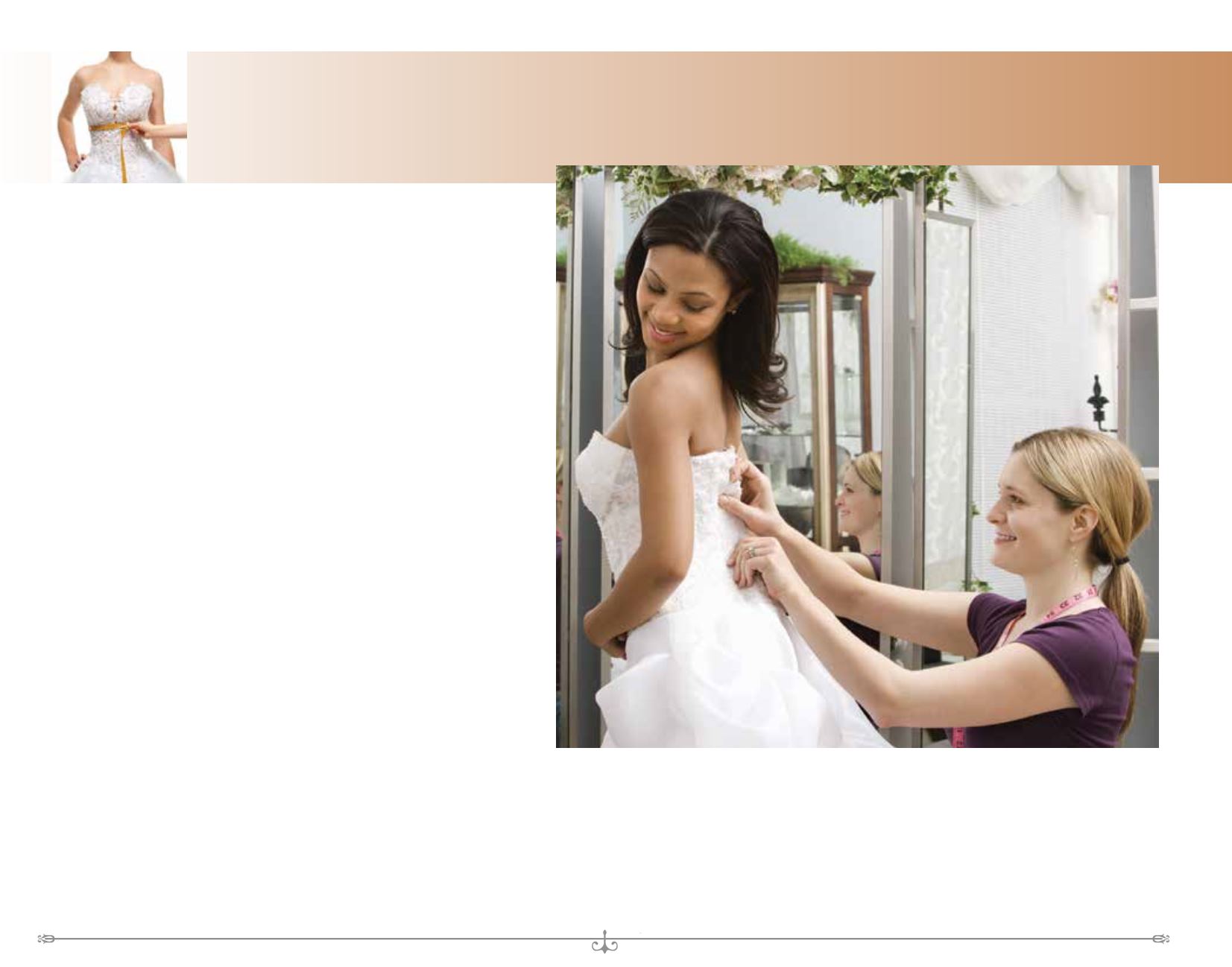

C H I C A G O W E D D I N G & P A R T Y R E S O U R C E
W W W . C H I C A G O W E D D I N G R E S O U R C E . C O M
64
F A S H I O N S , J E W E L R Y , A C C E S S O R I E S F O R M E N & W O M E N
Now that your dress has finally come in, it’s time to make it look like it was made
just for you. Most gowns need some sort of alteration, but the process is easier than
you think.
1. DO YOUR RESEARCH
Don’t commit to your bridal shop’s alteration service without researching other
options. Solicit or research names of trusted tailors to inquire about their industry
experience, alterations timeline, and estimated price. Find someone you like and
feel would treat your dress as if it were their own. Be picky and don’t settle.
2. GIVE YOURSELF ENOUGH TIME
Allow eight to 10 weeks from your first fitting to your last as an ideal alterations
timeline. On average, brides have three to four fittings, each focused on different
design elements.
Contact your seamstress as soon as your dress arrives so the tailor can work you
into her busy schedule.
3. SET AN APPROPRIATE BUDGET
Brides can expect to pay between $400 and $700 for professional tailoring.
Anything less you shouldn’t trust. Bad work can ruin your dress.
One way to keep costs down is to order your dress in the right size. Rule of thumb:
listen to your bridal consultant. Specialty shops use European sizing, so don’t feel
discouraged when she suggests 1-2 sizes larger than your jean size. Remember, you
can take a dress in easier than you can let it out.
4. BRING THE ESSENTIALS
Bringing your shoes and undergarments to your fittings is nearly as important as bringing
your dress. These accessories allow you to obtain the proper length and fit of your gown. If
you can’t commit to a shoe by your first fitting, find one with your desired heel height.
While it’s important to bring friends to fittings, keep your entourage small. Invite a trusted
friend or relative for a second set of eyes. A bridesmaid should also be present at your final
appointment so the seamstress can teach her how to tackle your bustle.
The more prepared you are for alterations, the better your chance of your dress fitting
perfectly. After all, you’ve spent all that time finding the dress, right? Why risk it not fitting
like a glove?
© CTW Features
You’ve found the dress. Now what?
Here are 4 expert tips to make your tailoring
experience painless
By Heather Dornhecker
The Smart Bride’s Guide to Alterations









